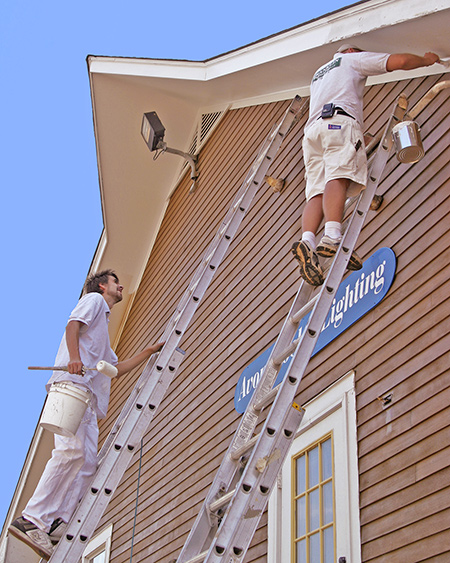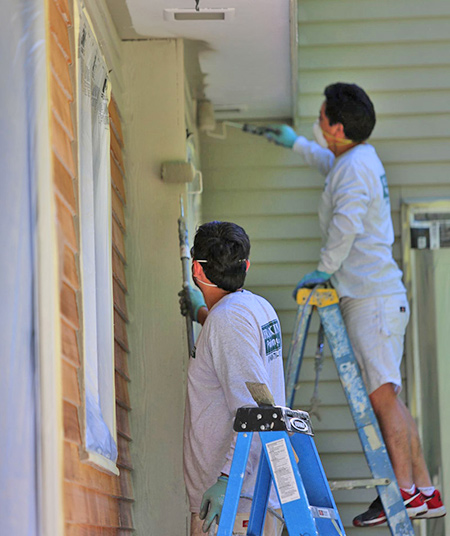
MISTAKE 1: Failure to scrape and sand
By thoroughly scraping and sanding the surfaces to be painted, you’ll prevent flaking and peeling of the new paint. Painting over un-prepped surfaces produces an uneven look that can be further marred by drips when the raised edges of old, dry paint aren’t sanded down smooth.
MISTAKE 2: Lack of weathered-wood prep
You cannot just throw new paint onto bare wood that either has never been painted before or from which old paint was scraped off. Untreated wood will absorb much more paint than painted wood, resulting in a blotchy, unsightly appearance. Solve this problem by using a primer on all areas of bare wood.
MISTAKE 3: Avoiding primer all together
Bare wood needs a good coat of primer, but smart painters know that they’ll turn out a much nicer job if they prime all exterior surfaces before painting them. Primer sticks to any clean surface to which it’s applied, and it forms a surface of its own that makes it easy to apply a smooth, consistent layer of new paint.
MISTAKE 4: Neglecting to address moisture issues
Moisture within the walls on which new paint will be applied will cause blistering and peeling. Common areas that allow in moisture on the exterior of a home include window frame edges, door frames, corner joints and any place else that has small openings or cracks. Add caulking around all these areas to keep out the moisture.
MISTKE 5: Thin coats
Paint should be applied at a spread rate in accord with the paint manufacturer’s recommendation. Cutting corners by thinning paint or applying very thin coats will result in ugly cracks and peeling. Insufficient paint also can lead to the formation of mildew. On the other side, don’t over-apply paint, because that will lead to its own set of problems. Read the paint can, or get advice from an expert, and then apply just the right amount of paint.
MISTAKE 6: Painting in the wrong weather
Applying latex paints in cold weather will keep the paint from adhering properly to surfaces, and painting when it’s too hot will cause the paint to be less durable over time. Check your paint can for ideal temperatures for painting – and watch weather forecasts so you aren’t painting 24 hours before or after rain.
 MISTAKE 7: Buying cheap paint
MISTAKE 7: Buying cheap paint
This is one of the most common mistakes novice painters make. Always buy the best paint you can afford. You’ll gain nothing by saving a few bucks at the paint store and then having to constantly touch-up or possibly completely re-paint.
These are good tips for non-professional painters that will allow for a much better painting experience and finished result. If you’d prefer to bypass all the work and call in the experts, Franklin Painting of Farmington, CT, is standing by. Call (877) 646-7774 for an amazing, beautiful result every time.

 MISTAKE 7: Buying cheap paint
MISTAKE 7: Buying cheap paint